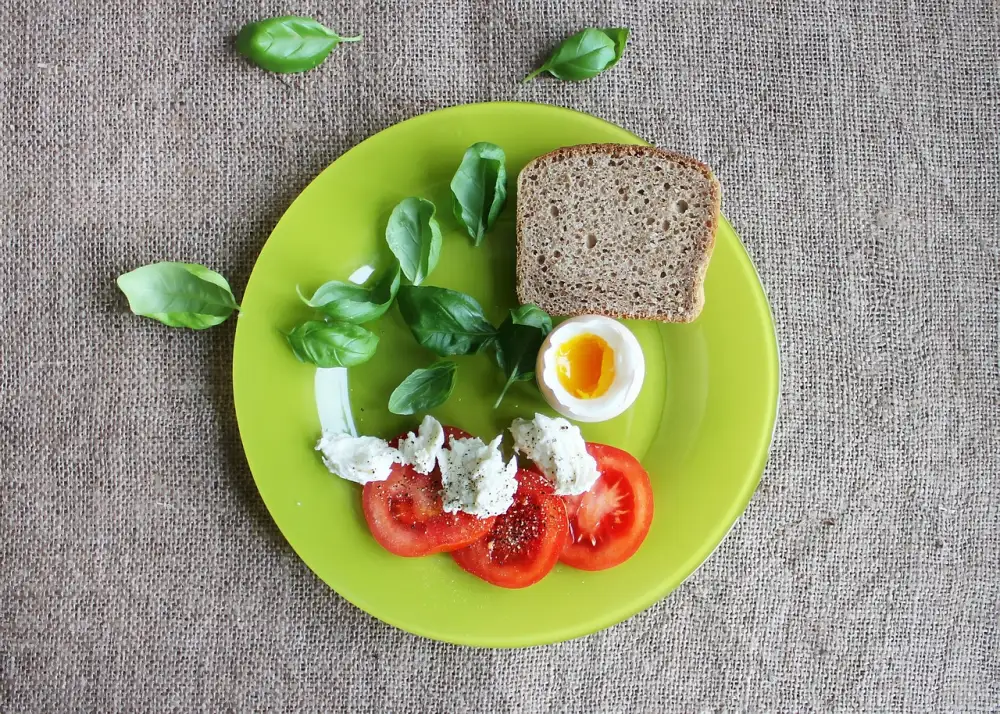Deliciously Runny: Master the Art of Soft Boiled Eggs for Ultimate Foodie Satisfaction

- Benefits of cooking soft boiled eggs
- Step-by-step guide on how to cook soft boiled eggs
- Tips and tricks for achieving the perfect soft boiled egg
- Serving suggestions and accompaniments for soft boiled eggs
- Variations and creative ways to enjoy soft boiled eggs
- Frequently asked questions about soft boiled eggs
Soft boiled eggs are a culinary delight that combines the best of both worlds - a tender, runny yolk encased in a perfectly cooked egg white. This classic breakfast dish is loved by food enthusiasts around the world for its simplicity and versatility. Whether enjoyed on its own with a sprinkle of salt and pepper or used as a topping for salads, toast, or noodles, soft boiled eggs are sure to satisfy even the most discerning taste buds. In this article, we will delve into the art of cooking soft boiled eggs and explore the many ways you can elevate your culinary experience with this delicious delicacy.
Benefits of cooking soft boiled eggs
Soft boiled eggs offer a multitude of benefits that make them a popular choice among culinary enthusiasts. Firstly, the delicate and creamy texture of the yolk is a delight to the senses, providing a luxurious eating experience. Additionally, soft boiled eggs are a great source of high-quality protein, essential vitamins such as vitamin B12 and vitamin D, and minerals like iron and selenium. They are also low in calories and fat, making them a healthy option for those watching their weight. The gentle cooking process of soft boiling helps to retain the nutrients in the egg, ensuring maximum nutritional value. Moreover, soft boiled eggs are quick and easy to prepare, making them an ideal choice for busy individuals who desire a nutritious meal in no time. With their numerous health benefits and convenience factor, it's no wonder that soft boiled eggs have become a favorite among food lovers worldwide.
Step-by-step guide on how to cook soft boiled eggs
1. Start by bringing a pot of water to a gentle boil.
2. Carefully lower the eggs into the boiling water using a spoon.
3. Set a timer for 4-6 minutes, depending on your desired level of runniness.
4. While the eggs are cooking, prepare an ice bath in a bowl filled with cold water and ice cubes.
5. Once the timer goes off, immediately transfer the eggs to the ice bath to stop the cooking process.
6. Let the eggs sit in the ice bath for about 1 minute to cool down completely.
7. Gently tap each egg on a hard surface to crack the shell, then carefully peel it off.
8. Serve your perfectly cooked soft boiled eggs immediately with salt, pepper, and toast soldiers for dipping.
Remember, timing is crucial when cooking soft boiled eggs, so adjust accordingly based on your preference for yolk consistency. Enjoy!
Tips and tricks for achieving the perfect soft boiled egg
To achieve the perfect soft boiled egg, follow these tips and tricks:
1. Start with room temperature eggs: Cold eggs can crack when placed in boiling water, so allow them to come to room temperature before cooking.
2. Use a timer: Cooking time is crucial for achieving the desired consistency. For a runny yolk, cook the eggs for 4-5 minutes; for a slightly firmer yolk, cook for 6-7 minutes.
3. Gently place eggs in boiling water: Lowering the eggs into gently boiling water helps prevent cracking. Use a spoon or tongs to carefully lower them in.
4. Control the heat: Maintain a gentle boil throughout the cooking process. Too vigorous of a boil can cause the eggs to bounce around and potentially crack.
5. Shock in ice water: After cooking, immediately transfer the eggs to an ice bath to stop the cooking process and make them easier to peel.
6. Adjust cooking time based on egg size: Larger eggs may require an extra minute or two of cooking time, while smaller ones may need less time.
By following these tips, you'll be able to consistently achieve perfectly cooked soft boiled eggs with deliciously runny yolks that are sure to satisfy any foodie's cravings!
Serving suggestions and accompaniments for soft boiled eggs
Soft boiled eggs are a versatile and delicious dish that can be enjoyed in various ways. Here are some serving suggestions and accompaniments to enhance your soft boiled egg experience.
1. Classic: Serve your soft boiled eggs with a sprinkle of salt and pepper for a simple yet satisfying meal. Pair it with buttered toast or crusty bread for added texture.
2. Dipping Delight: Soft boiled eggs are perfect for dipping! Serve them with toasted soldiers (thin strips of toast) for a fun and interactive breakfast or snack.
3. Asian Twist: In many Asian cuisines, soft boiled eggs are served with soy sauce or tamari for an umami-rich flavor. Add a drizzle of sesame oil and sprinkle some chopped scallions on top for extra freshness.
4. Salad Sensation: Slice your soft boiled eggs and add them to salads for a protein-packed boost. They pair well with greens, avocado, cherry tomatoes, and a tangy vinaigrette.
5. Ramen Upgrade: Elevate your bowl of ramen by adding a perfectly cooked soft boiled egg. The creamy yolk adds richness to the broth, creating a comforting and satisfying meal.
6. Brunch Bliss: Soft boiled eggs are a brunch staple! Serve them alongside crispy bacon, sautéed mushrooms, roasted tomatoes, and toast for an indulgent weekend treat.
Remember to experiment with different herbs, spices, and sauces to personalize your soft boiled egg creations. Whether you enjoy them as part of a hearty breakfast or as an elegant appetizer, the possibilities are endless when it comes to serving these delectable treats!
Variations and creative ways to enjoy soft boiled eggs
Soft boiled eggs are incredibly versatile and can be enjoyed in various ways. Here are some creative ideas to elevate your soft boiled egg experience:
1. Egg and soldiers: Serve your soft boiled eggs with strips of toast, known as "soldiers," for a classic and comforting breakfast.
2. Ramen topping: Add a perfectly cooked soft boiled egg to your bowl of ramen for an extra creamy and rich texture.
3. Salad topping: Slice a soft boiled egg and use it as a protein-packed topping for salads, adding a deliciously runny dressing.
4. Avocado toast: Mash an avocado onto toast, then top it off with a halved soft boiled egg for a nutritious and satisfying meal.
5. Egg mayo sandwich: Mix chopped soft boiled eggs with mayonnaise, mustard, and seasonings to create a flavorful filling for sandwiches.
6. Cobb salad: Include sliced soft boiled eggs alongside bacon, avocado, tomatoes, and blue cheese in this classic American salad.
7. Scotch eggs: Wrap soft boiled eggs in sausage meat, coat them in breadcrumbs, and deep-fry until golden brown for a delightful snack or appetizer.
8. Asian-style marinade: Marinate peeled soft boiled eggs in soy sauce, mirin, and sesame oil overnight for an umami-packed treat.
Get creative with these variations to make the most of the velvety yolk and delicate white of your perfectly cooked soft boiled eggs!
Frequently asked questions about soft boiled eggs
1. How long should I cook a soft boiled egg for?
The cooking time can vary depending on the size of the egg and personal preference. Generally, 4-6 minutes will result in a runny yolk, while 7-8 minutes will give you a slightly firmer yolk.
2. Can I use cold eggs or should they be at room temperature?
You can use eggs straight from the refrigerator or let them come to room temperature before cooking. Using cold eggs may require slightly longer cooking times.
3. How do I prevent my eggs from cracking while boiling?
To prevent cracking, gently lower the eggs into boiling water using a spoon and avoid dropping them in too quickly. Adding a pinch of salt or vinegar to the water may also help.
4. How do I peel soft boiled eggs without damaging them?
After cooking, immediately transfer the eggs to an ice bath to cool down. Gently tap the shell on a hard surface to create cracks, then peel under running water to help remove the shell more easily.
5. Can I reheat soft boiled eggs?
It is not recommended to reheat soft boiled eggs as they may become overcooked and lose their desired texture. It's best to enjoy them immediately after cooking.
6. Are soft boiled eggs safe to eat?
Soft boiled eggs are safe to eat as long as they are cooked properly and handled hygienically. It is important to use fresh, clean eggs and cook them until both the white and yolk are set.
Remember that practice makes perfect when it comes to achieving your desired level of doneness for soft boiled eggs. Experiment with different cooking times and methods until you find your ideal balance between firmness and runniness in the yolk.
In conclusion, mastering the art of cooking soft boiled eggs is a surefire way to elevate your culinary skills and satisfy your taste buds. The delicate balance between a runny yolk and a perfectly set white is truly a delight to experience.
Soft boiled eggs offer numerous benefits, from their quick cooking time to their versatility in various dishes. They are packed with nutrients and make for a wholesome and satisfying meal option.
By following the step-by-step guide and implementing the tips and tricks mentioned, you can achieve the perfect soft boiled egg every time. Remember to experiment with different cooking times to find your preferred level of doneness.
When it comes to serving suggestions, soft boiled eggs are incredibly versatile. Enjoy them simply seasoned with salt and pepper, or use them as a topping for salads, noodles, or avocado toast. Their creamy texture adds richness to any dish.
For those looking for variations, try adding herbs or spices to the boiling water for infused flavors. You can also experiment with different accompaniments such as crispy bacon, sautéed mushrooms, or grilled asparagus.
In conclusion, soft boiled eggs are a culinary delight that should not be overlooked. With their delicate texture and rich flavor, they are sure to please even the most discerning foodie. So go ahead, master the art of cooking soft boiled eggs and indulge in this delicious treat!
Published: 27. 11. 2023
Category: Food



